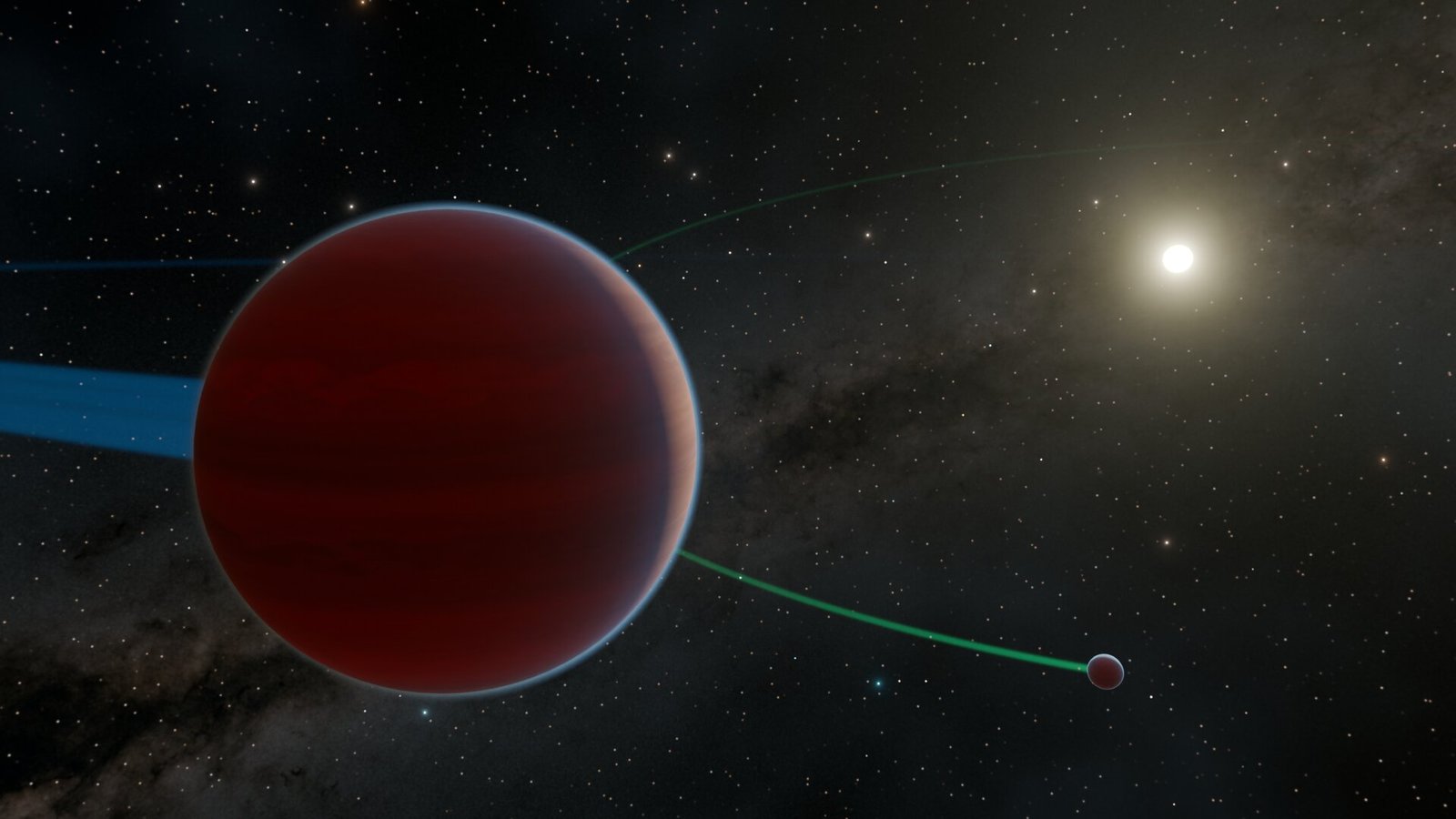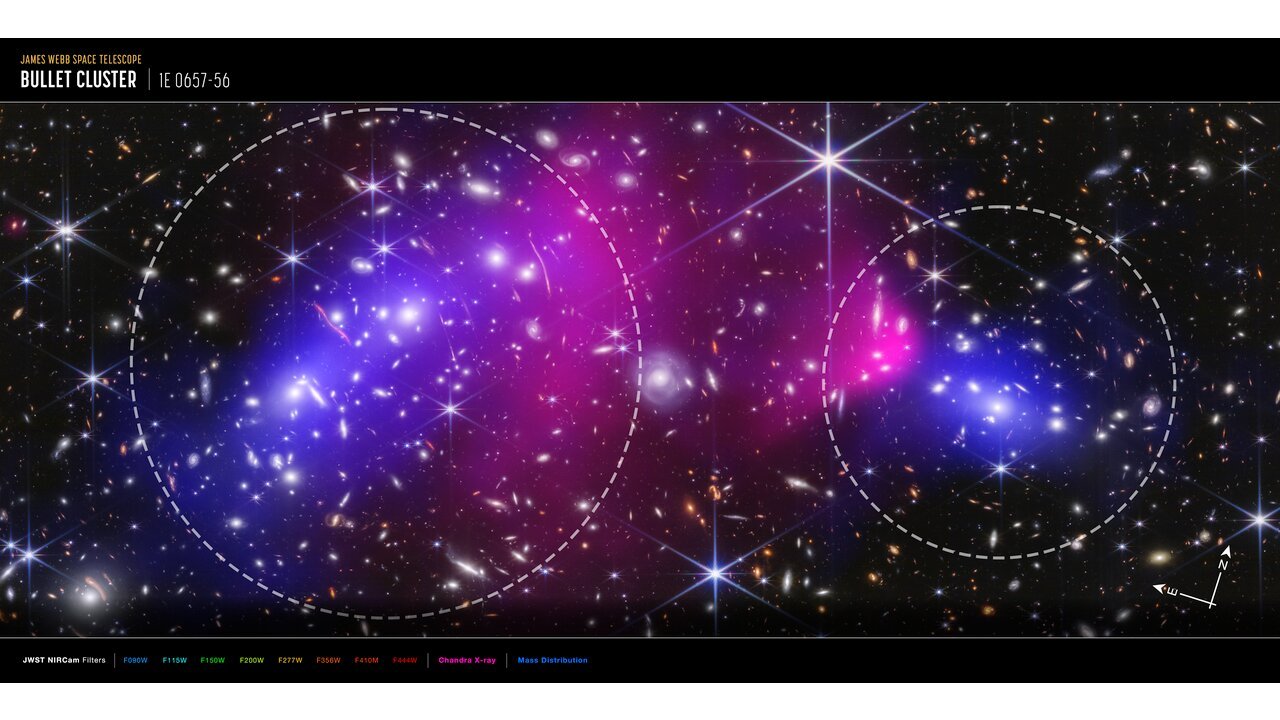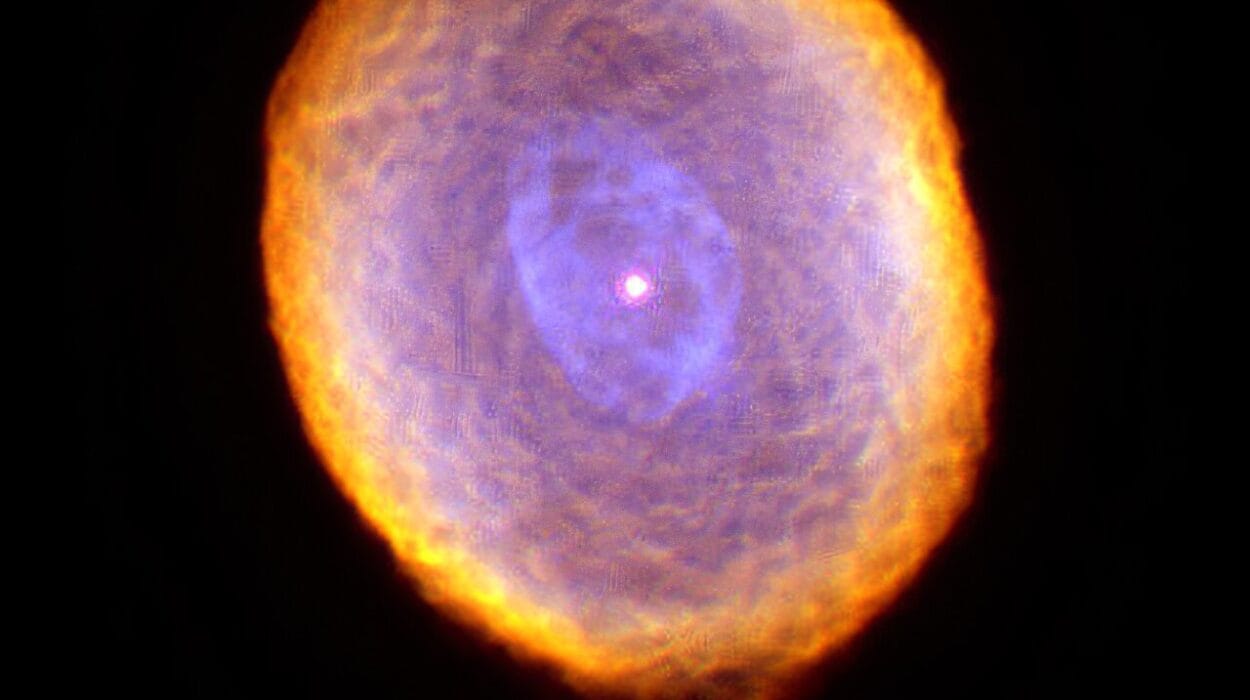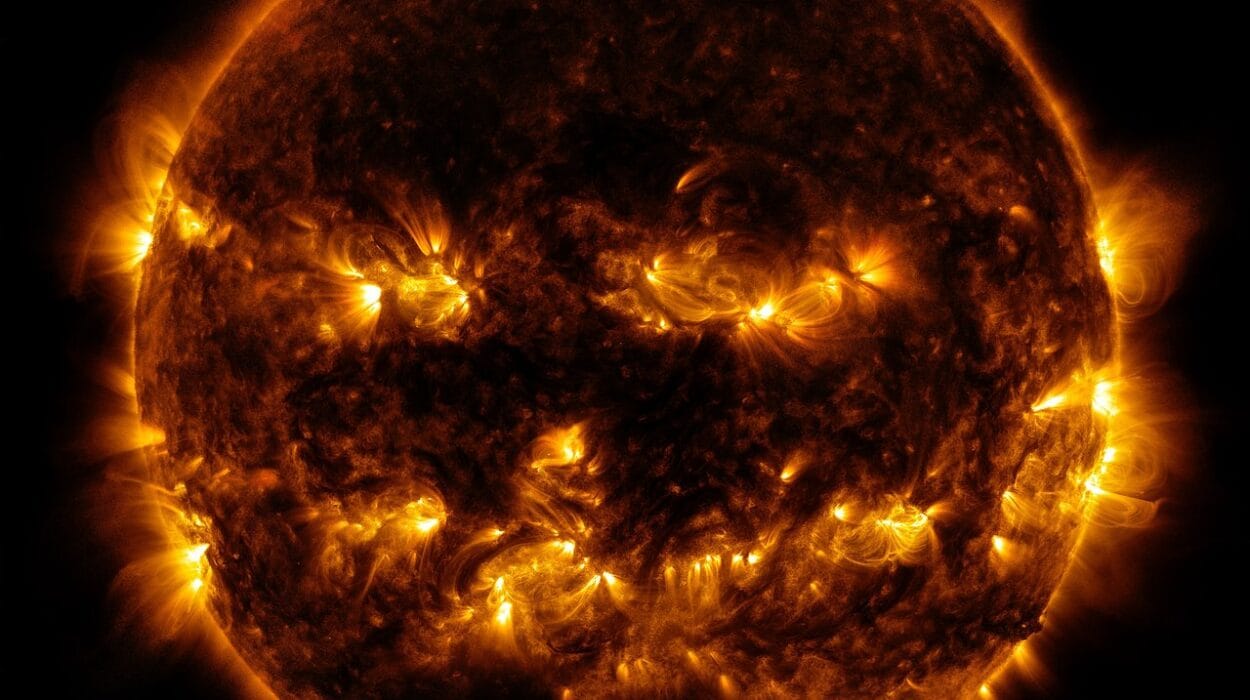High above the dark skies of Chile’s Atacama Desert, four giant mirrors gather starlight, focusing their gaze on a distant patch of the constellation Lupus. Somewhere in that stellar wilderness, a young planet glows faintly near a star that, until recently, seemed too quiet to harbor worlds.
Now, thanks to the tireless efforts of an international team led by Tomas Stolker from Leiden University in the Netherlands, that hidden planet has stepped into the light. Orbiting the star HD 135344 A, this newborn gas giant offers astronomers an astonishing window into how planets form—and how, even in twin-star systems, cosmic evolution can run on dramatically different clocks.
A Tale of Two Stars
Some 440 light-years from Earth, the double star system HD 135344 AB sits among the dusty riches of the Lupus star-forming region. Here, cosmic clouds swirl with gas and dust, feeding the births of new stars and, sometimes, new worlds.
Stars A and B of this system have been celestial partners for roughly 12 million years—an eyeblink in cosmic time. Yet despite sharing the same birthplace and age, the two stars have diverged in their cosmic journeys.
Astronomers have long known that HD 135344 B wears a glittering skirt of dust and gas—a protoplanetary disk still swirling with raw materials for planets. That disk has made Star B a darling of researchers probing the secrets of world-building.
But its twin, HD 135344 A, seemed bare and silent. With no disk left around it, astronomers assumed that any planet-making around this star had long since ended. And many wondered: had Star A simply never formed planets—or had they already emerged and vanished from our view?
Tomas Stolker, whose fascination with this system began during his doctoral research, decided to find out.
“Star A had never been investigated because it does not contain a disk,” Stolker explained. “My colleagues and I were curious about whether it had already formed a planet. And so, after four years of careful measurements and some luck, the answer is yes.”
A Young Giant in the Dark
Enter HD 135344 Ab—a massive, swirling ball of gas no older than 12 million years, orbiting Star A at a distance comparable to that between our Sun and Uranus. With a mass roughly ten times that of Jupiter, it’s a true colossus among planets, and yet until now, it remained hidden in the glare of its star.
The discovery was possible thanks to a remarkable technological partnership. Astronomers turned to the SPHERE instrument on the European Southern Observatory’s Very Large Telescope (VLT), a cutting-edge tool designed to peer through starlight and catch faint planetary companions.
The SPHERE images were thrilling: a dim, reddish glow near Star A hinted at a planetary presence. But for a long while, uncertainty hovered like cosmic dust. Could it simply be a background star shining in the same line of sight?
To banish doubt, the team called upon GRAVITY—a pioneering instrument that knits together the light from the VLT’s four massive telescopes. GRAVITY measures the positions of celestial objects with astonishing precision, like using a ruler to measure the width of a human hair from kilometers away.
Over four years and seven observation runs, astronomers tracked HD 135344 A and its suspected companion, watching their celestial dance unfold.
Each time, the faint red dot moved in perfect synchrony with the star itself.
“There is no background star,” Stolker said. “We’ve been lucky, though. The angle between the planet and the star is now so small that SPHERE can barely detect the planet.”
Planet Formation on Different Timelines
Perhaps the most compelling twist in this cosmic story is what the discovery says about how planets come to be.
Here are two stars—HD 135344 A and B—born together, nurtured in the same stellar nursery, and nearly identical in age. Yet their planetary destinies diverge dramatically.
Star A is finished. Its dusty disk has vanished, signaling that its planet-forming days are over. And lurking in the darkness is a colossal gas giant that confirms planet-making has indeed occurred around this star.
Meanwhile, Star B still spins with a disk of gas and dust—a planet nursery in progress. Somewhere in that swirling disk, new worlds may yet be forming, their secrets waiting to be revealed by future observations.
This is the cosmic paradox: two stars, same age, yet running on staggered planetary clocks.
“It demonstrates that planet formation around binary stars can occur on different timelines,” said Stolker.
Such differences could be driven by the stars’ individual masses, the dynamics of their disks, or the gravitational influences each star exerts on the other—a mystery that astronomers are eager to unravel.
A Glimpse of a Hidden Population
The discovery of HD 135344 Ab doesn’t just add a new point on an astronomer’s sky map. It hints at an entire hidden population of massive planets lurking at similar distances from young stars.
These are worlds far enough from their suns to be challenging targets for current instruments—but close enough that, until recently, they remained invisible to older telescopes.
“This planet might be part of a population of exoplanets that have so far been difficult to detect,” Stolker said.
The stakes for discovery are high. Each new exoplanet is a chapter in the story of how worlds like our own—and unlike our own—emerge from cosmic dust and gas.
And scientists are already looking to the future. The team plans to continue monitoring HD 135344 Ab with GRAVITY, hoping to catch more subtle clues about its orbit and brightness. Even more tantalizing is the prospect of turning the upcoming Extremely Large Telescope (ELT)—currently under construction in Chile—toward this distant world.
With its vast mirror and exquisite sensitivity, the ELT could peel back the planetary atmosphere of HD 135344 Ab, revealing what chemicals swirl in its clouds and hinting at how this giant planet came to be.
A Cosmic Story Still Unfolding
For now, HD 135344 Ab circles quietly around its star, a young giant bathed in starlight, drifting through the emptiness 440 light-years from Earth.
Its discovery is a testament to human persistence and ingenuity—a reminder that in the vast darkness of space, secrets still lie waiting for those who dare to look closely enough.
In a cosmic dance spanning millions of years, even the faintest glow can rewrite what we thought we knew about how planets—and perhaps even life itself—come into being.
Reference: T. Stolker et al, Direct imaging discovery of a young giant planet orbiting on solar system scales, Astronomy & Astrophysics, accepted for publication. DOI: 10.1051/0004-6361/202555064 . Preprint (pdf): www.astronomie.nl/upload/files … olker-et-al-2025.pdf






